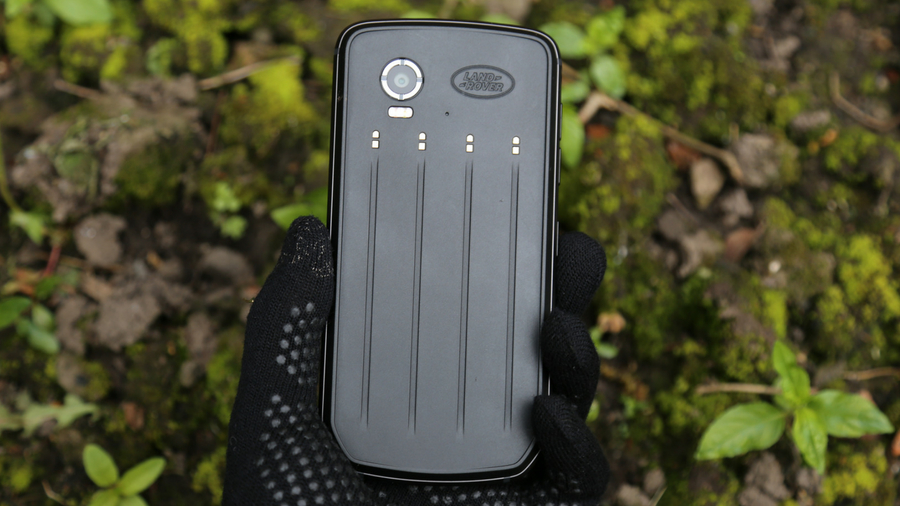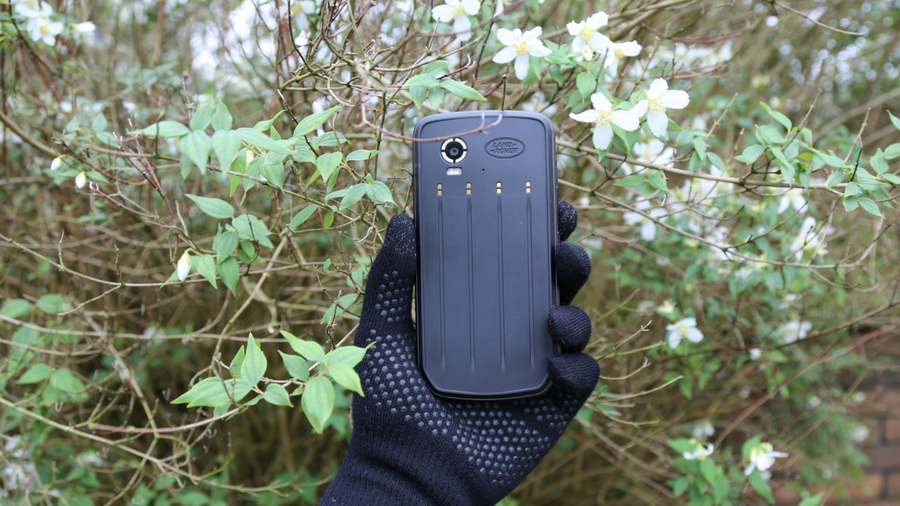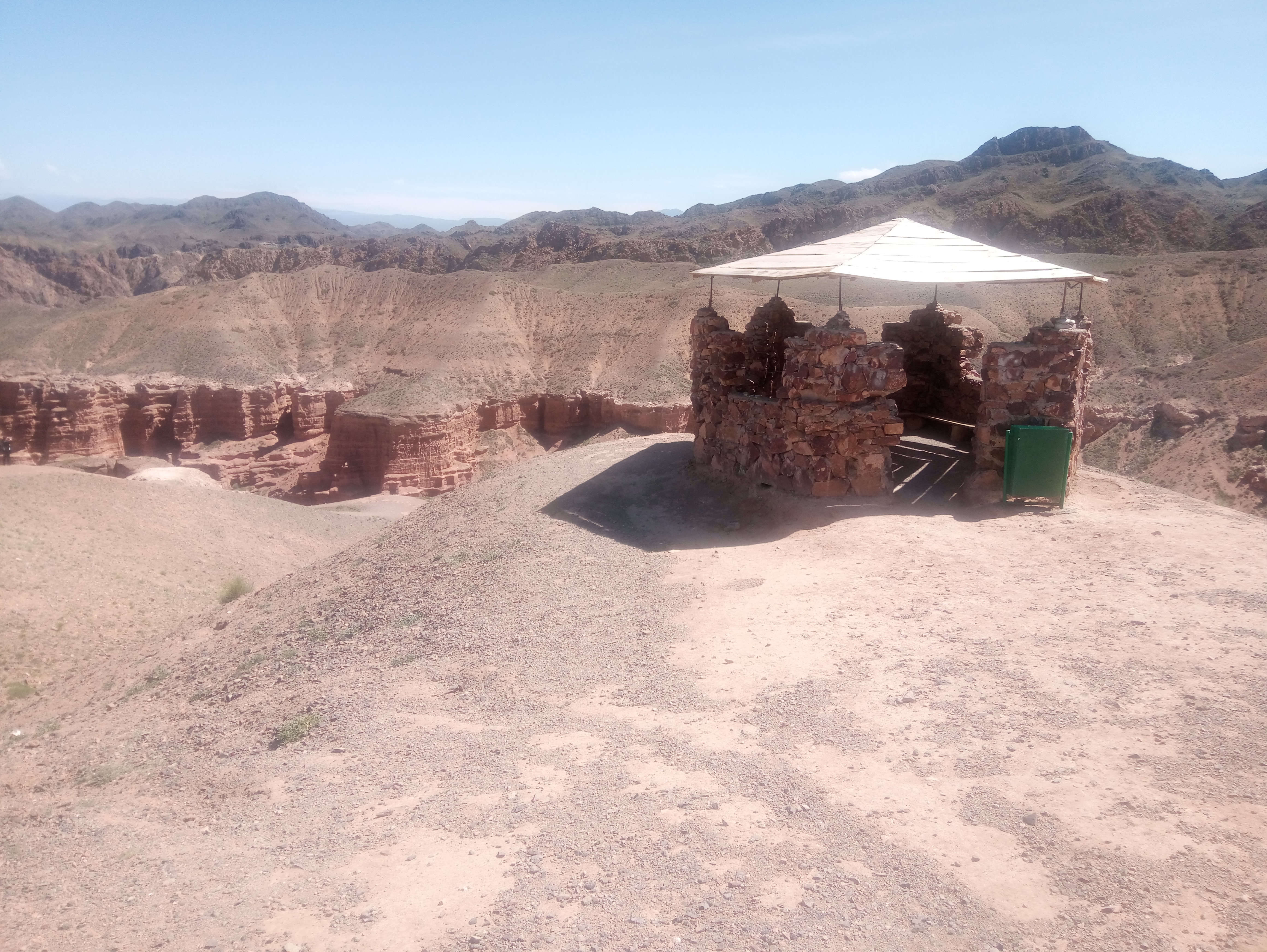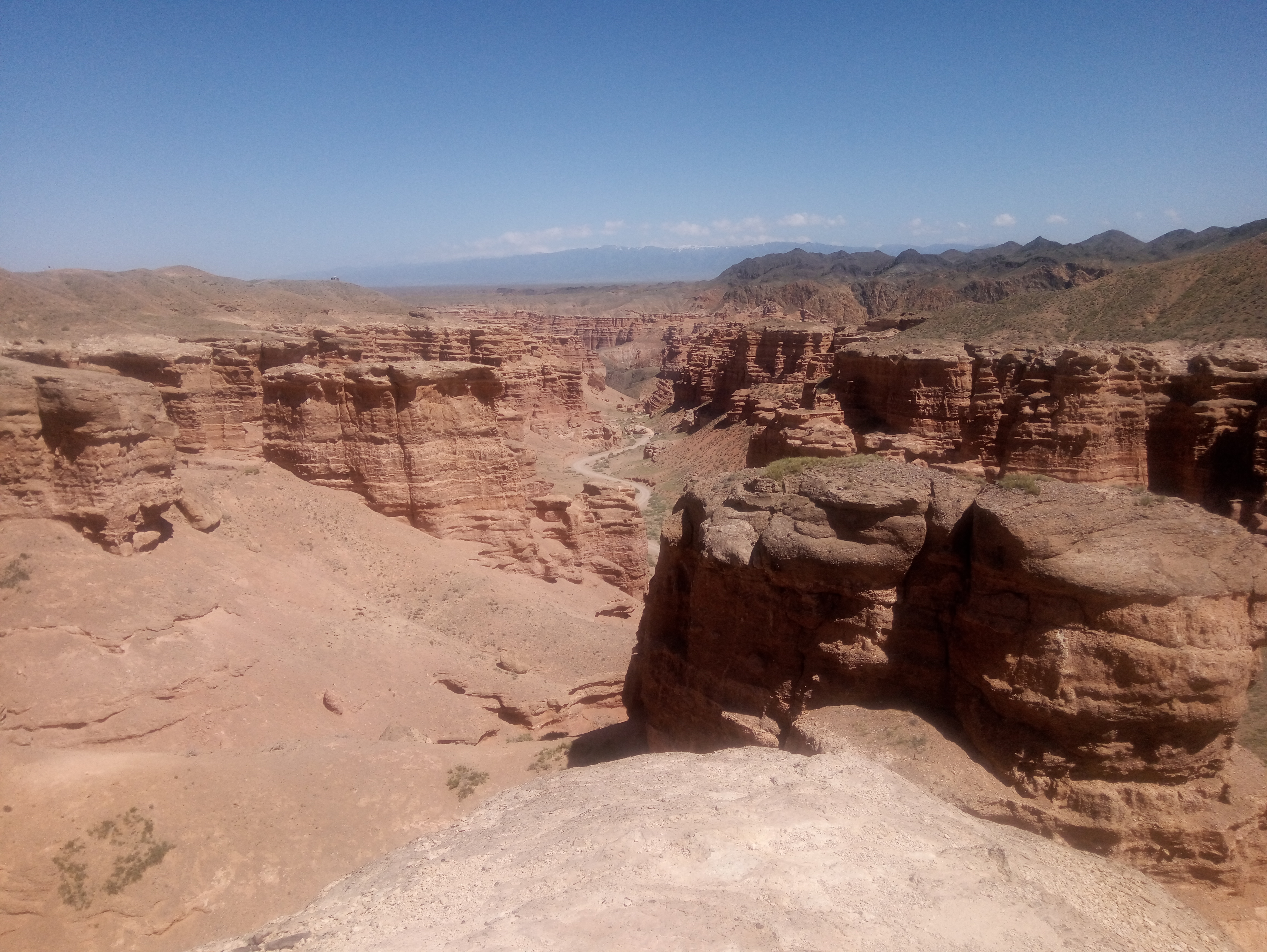TechRadar Verdict
Posers and pioneers alike will love the Land Rover Explore, a phone built for outdoor pursuits which impresses on durability and data-gathering, but has some small design flaws.
Pros
- +
Detects GPS in remote locations
- +
Magnetic add-on battery pack
- +
Screen works with wet or gloved fingers
Cons
- -
Carabiner case is unreliable
- -
Some features require a data connection
- -
GPS patch antenna drains battery
Why you can trust TechRadar
Adventures require technology, but while there are a handful of rugged phones available, most smartphones are slippery, terrible in freezing conditions, and lacking in the battery power required to fuel their feeble GPS skills.
Cue the Land Rover Explore, an Android handset that contains a lot of unique outdoor tech for the £599 price (around $800, AU$1,042).
It includes a proximity sensor, compass, accelerometer, gyroscope, barometer, a GPS patch antenna and a 4,000mAh battery that can be almost doubled with a clip-on module that comes with the phone.
The Explore’s modified Android Nougat operating system (with an update to Oreo planned) also makes it easy to access metrics that might be useful outdoors.
Coupled with the presence of OS maps, a powerful GPS module, and the ViewRanger app – complete with augmented reality for identifying mountain peaks and other landmarks – the Land Rover Explore is an undeniably handy tool for the outdoors.
Or anywhere else. After all, if you’re an urban warrior who commutes in a 4x4 for absolutely no reason, why wouldn’t you want to clip a phone to your belt with a carabiner?

Design
- Resistant to freezing temperatures, water, sand, dust, dirt, vibration, humidity and salt mist
- Adventure Pack has extra battery and ceramic patch GPS antenna
- Land Rover design motifs will be obvious only to car geeks
Weight: 232g
Dimensions: 152 x 75.3 x 14mm
OS: Android Nougat 7.0
Screen size: 5-inch
Resolution: 1080 x 1920
CPU: 2.6GHz deca- core MediaTek Helio X27
RAM: 4GB
Storage: 64GB
Battery: 4,000mAh + 3,620mAh
Rear camera: 16MP
Front camera: 8MP
Although the Explore is trying to be something rather more than the average Android handset, you wouldn’t know it from first glance. Sure, it’s a chunkier design than most, and the 5-inch screen doesn’t go edge-to-edge, but it’s nevertheless a pretty standard look.
We learned only from the press release that the rear camera’s lens is designed like a Land Rover headlight, and that the front-mounted speakers resemble the engine’s grille. Clever stuff, but unless you’re a Land Rover fan, you won’t notice any of that. We didn’t.
On the top there’s a 3.5mm headphone port, on the bottom a USB-C slot for recharging, while the sides sport rubberized volume buttons and a slot for a microSD card and two SIM cards. That could be handy for long-haul travel, as well as for roaming around the EU post-Brexit.

The Explore also comes with an Adventure Pack, a kit containing a nicely designed 3,620mAh additional battery that attaches to the back of the phone using magnets, along with a 25 x 25mm ceramic patch GPS antenna.
There's also a plastic case that encloses the battery when attached to the Explore, and has a stainless-steel carabiner attached. Rock climbers take note.
However, it’s what’s inside the Explore that makes it stand out. That it’s fitted with Corning Gorilla Glass 5 is no surprise, but its 1080 x 1920 (Full HD) screen is smarter than that.
It claims to be readable in bright sunlight, and it can be used with wet fingers, and also by gloved fingers, which is all critical for using the Land Rover Explore outdoors as a navigation aid.
In fact, it’s IP68-rated, so resistant to water (to a depth of 1.5 meters for up to 30 minutes), but also to sand, dust, dirt, vibration, humidity and salt mist.

Our personal favorite feature is that it can still work okay in freezing temperatures, from -30°C to 65°C/-22°F to 149°F. Regular smartphones stop working at about 0°C/32°F. For anyone who frequently skis or hikes in winter, that’s a potentially vital feature.
The Explore can survive a drop from 1.8 meters/6 feet, which we know to be true because it fell hard on to rock during our test hike through Kazakhstan’s remote Charyn Canyon. It left not a scratch on the Explore.
However, the accident happened because the Explore was hooked to a belt using the carabiner on the back of its optional Adventure Pack case. Although the carabiner’s fixings appeared to clip hard into place on the back of the case, it somehow came loose while it was hanging off the belt.
Something similar happened again later that day, so we lost all confidence in the carabiner case, and instead put the Land Rover Explore in the top pocket of a hiking shirt. Since the Explore is drop-tested, you could argue that none of that matters (rock climbers will disagree), but a secondary clip might be wise for version 2.0.

In use
- Latitude, longitude, altitude and compass all work off-grid
- OS maps can be pre-downloaded for going off-grid
- Highly accurate GPS route recording via impressive ViewRanger app
- Adventure Pack adds battery charge, but it drains quickly
With its outdoor credentials mostly reliable, there’s room for the Land Rover Explore’s true outdoor usefulness to shine, and that means its outdoorsy dashboard.
Accessed via a dedicated app icon that can ‘float’ around the screen for easy one-touch access, whatever other app is open, this modified Android interface contains everything you might need when outdoors.
The front page has a panel for weather predictions, plus six panels that can be customized.
There’s a compass, your exact latitude and longitude, altitude, the local time, sunset and sunrise times, tide times, a stopwatch, humidity, UV index, wind speed, visibility, sea temperature, swell height, SOS torch (which flashes)… the list is endless.

Although stuff like latitude, longitude, altitude and the compass work without any access to data, weather predictions, and even sunrise and sunset times, do require a constant data connection.
We realize the Explore is all about being location-specific, but it would be more useful if data like weather and sunset/sunrise times were retained from the last known location (most likely your home, or a Wi-Fi-equipped hotel lobby from where you left for the wilderness the previous day).
Another highlight of the Land Rover Explore is its ViewRanger app, which allows hikers and cyclists to navigate using off-road topographical mapping in conjunction with that ceramic patch GPS antenna.
It’s possible to pre-load maps, and even load up tracks to follow, and although the latter wasn’t possible in Kazakhstan, we recorded the route with extraordinary precision, and got plenty of data.
It’s a great app, but notably one that can be downloaded to other phones from Google Play (though most phones won't give you as much GPS precision).

After a three-hour hike, the Adventure Pack battery had pretty much run-down; those GPS goodies come at a cost. So the extra battery life is best seen as essential rather than as a nice option.
Another highlight of the ViewRanger app is Skyline, an augmented reality feature that allows you to identify the names of mountain peaks just by pointing the phone’s camera at the panorama before you.
However, though it correctly identified various peaks while being used in a vehicle near to a recent Wi-Fi connection, by the time we got to Charyn Canyon, Skyline was no longer working without a data connection.

Benchmarks and battery life
- Average life from built-in battery
- Low to middling benchmark performance
Using the Geekbench 4 app’s CPU test, the Explore achieved a single-core score of 809 (which puts it on a par with the Samsung Galaxy S5 and the Nexus 5) and a multi-core score of 4,937 (just below the Samsung Galaxy Note 7). So this is not a power-packed phone.
On the compute test, it scored 3,703 (akin to the Nexus 9 and Nexus 6), and for the battery test, 2,455 (more than the iPhone 8 and the Google Pixel, but substantially less than the Samsung Galaxy S8).
Running our standard 90-minute battery test with a full HD video, screen brightness cranked up to full, and Wi-Fi connected, the Explore had 80% of its charge left, which is a very average result.

Screen and camera
- Not great in bright sunlight
- Red light filter is useful
- 16MP rear camera and 8MP front-facing one
Next, let's look at that 5-inch 1080p screen. In bright direct sunlight the display is not significantly easier to use than a regular phone.
However, we loved its ambient light sensor, and particularly the red light filter, which stops the user from being blinded at night by the screen's white light, preserving night vision. That’s a feature that all smartphones should always have.
It’s not perfect, but that kind of attention to detail makes the Explore the best thought-out outdoor phone around.
The Land Rover Explore also gives you a 16MP rear camera and 8MP front-facing one to capture your adventures. You can see some examples of how the main snapper performed below - shots were generally acceptable, if often a little drab.
Camera samples
Verdict
The Land Rover Explore is a phone designed for those going off-grid. Or is it? There’s no question that this is one of the best phones around for true outdoor types.
However, we're convinced that it’s styled to appeal as much to the faux-outdoor lifestyle of the average 4x4 owner as it is to hikers, climbers, cyclists and kayakers.
Although the modified Android OS is outdoorsy to the core, too many of the key data metrics gathered become unavailable when the phone goes truly off-grid. Critical information like sunrise and sunset times only remain when the phone is refreshing on a data connection; go off grid – which is surely what this phone is for – and key data disappears.
That’s not to say the Explore is not fit for use by adventurers; it definitely is, and besides, there’s little competition in its niche.
With a waterproof, drop-proof design and a portable battery module, we can see the appeal of the Explore as merely a well-designed phone for people who want a handset that can work in all kinds of weather, including freezing conditions.
However, despite the Explore’s ‘Land Rover DNA’ being of little interest to true outdoor types, this phone - with its cute car-inspired design motifs - has fans of the luxury car brand firmly in its sights. So the Explore will likely be welcomed just as much by posers as by pioneers.
First reviewed: June 2018
Jamie is a freelance tech, travel and space journalist based in the UK. He’s been writing regularly for Techradar since it was launched in 2008 and also writes regularly for Forbes, The Telegraph, the South China Morning Post, Sky & Telescope and the Sky At Night magazine as well as other Future titles T3, Digital Camera World, All About Space and Space.com. He also edits two of his own websites, TravGear.com and WhenIsTheNextEclipse.com that reflect his obsession with travel gear and solar eclipse travel. He is the author of A Stargazing Program For Beginners (Springer, 2015),







